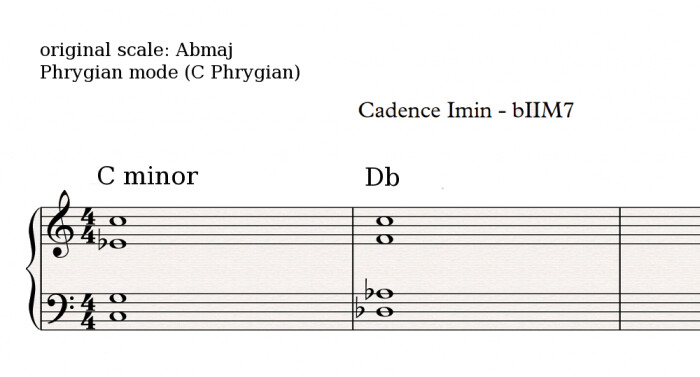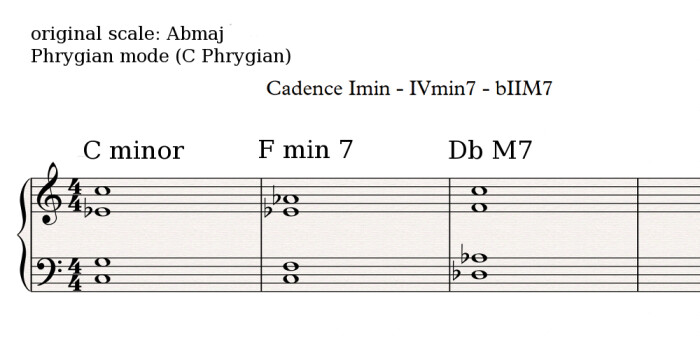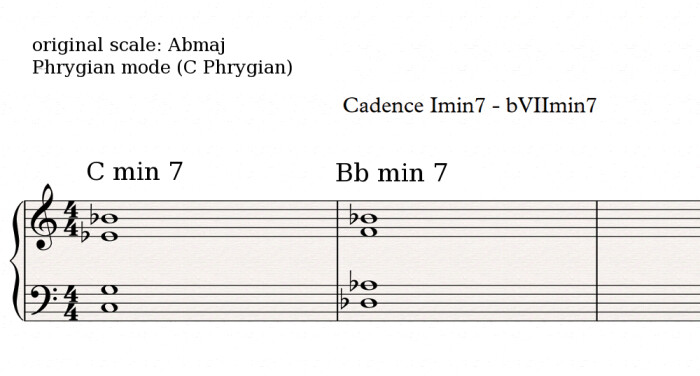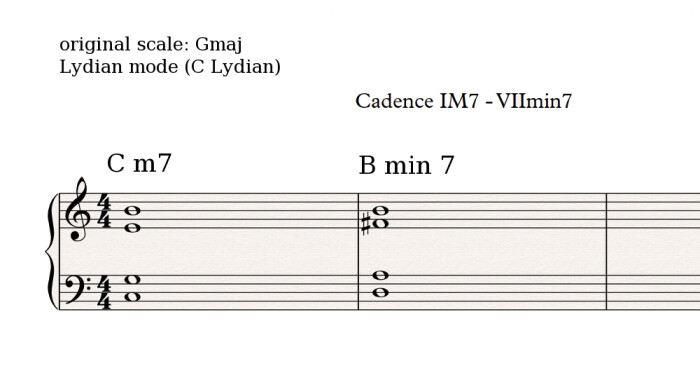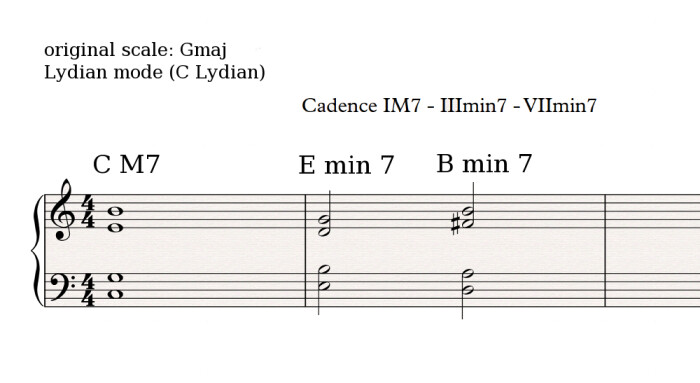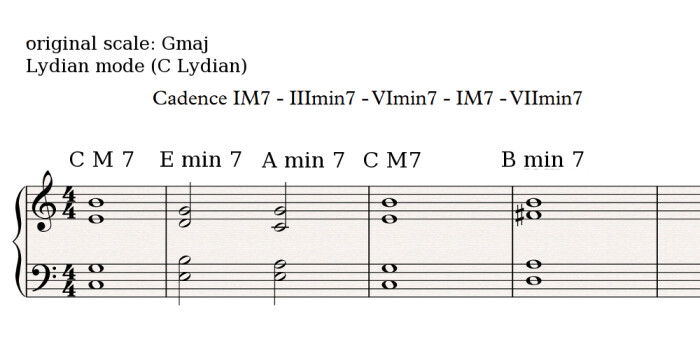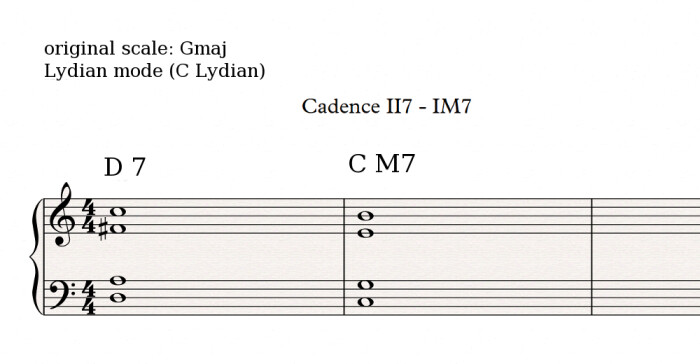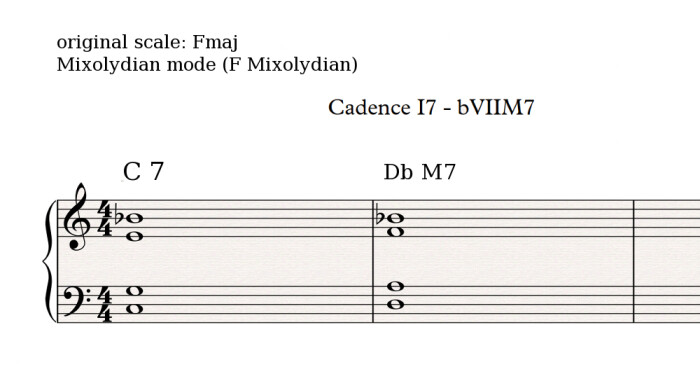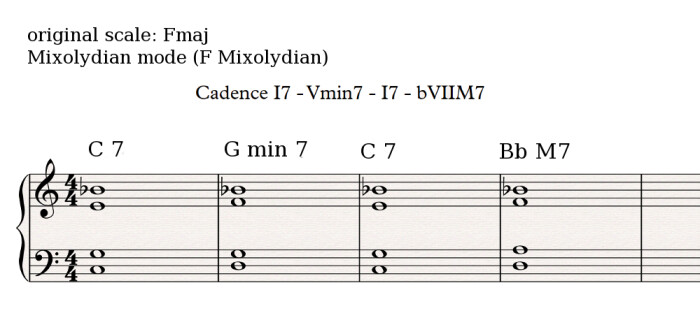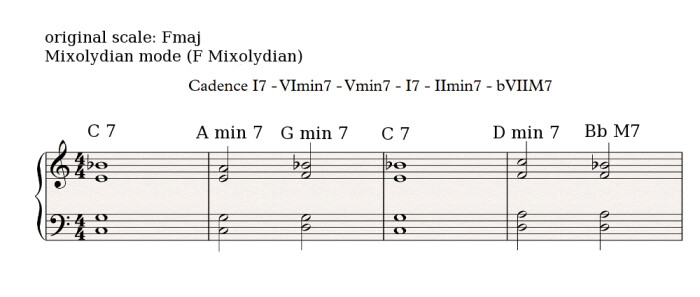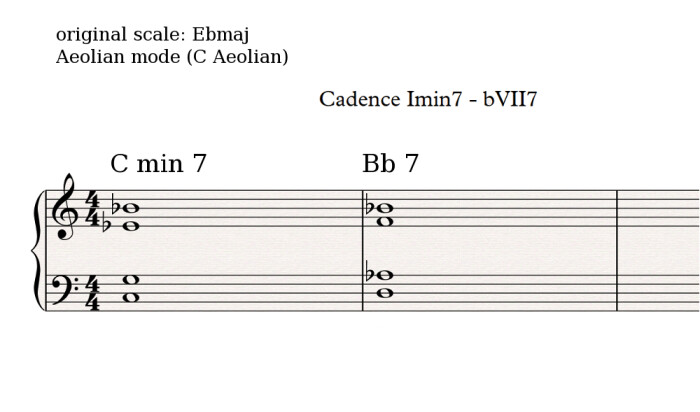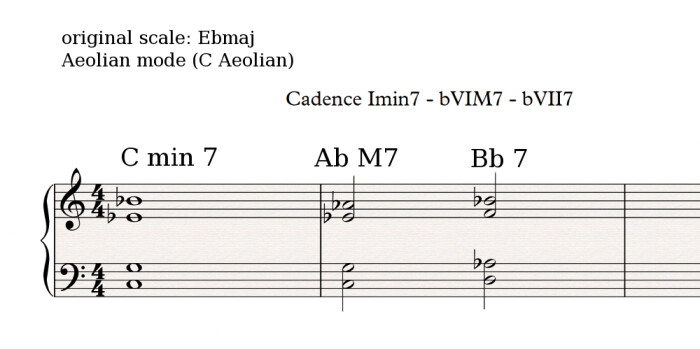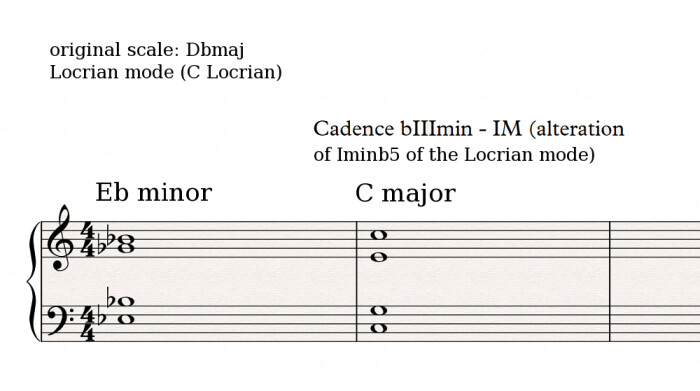In this article we'll continue on the same path as last week, reviewing the characteristic cadences of each mode.

After the Dorian mode comes…
The Phrygian mode
The main cadences of the Phrygian mode are the following: The first cadence goes from the tonic minor chord (I minor in this case) to the second degree flat (bIIM7 in this case).

The second one introduces the IV degree minor chord (IV min 7 in this case) between the two previous chords.

The third one goes from the tonic chord (I min 7) to the seventh degree flat (bVII min 7 in this case).

You can also use a I min 7 – bVII min 7 – bIIM7 progression.

Which is like placing the bVII min 7 between the two chords of the first cadence.
The Lydian mode
The Lydian mode uses the following formulas: The progression from the tonic chord (IM7) to the seventh degree (VII min 7 here).

This cadence can be enriched with the introduction of a chord based on the third degree (III min 7 in this case), as in the following example:

And you could actually also add to the previous progression the sixth degree chord (VI min 7), going through the I degree, like in the example below:

Finally, you can also use the cadence which leads from the second degree (II7 here) to the tonic chord:

The Mixolydian mode
It’s important to recall that the Mixolydian mode is the one that’s characteristic to the dominant of the original scale, which means you need to be specially careful if you want to avoid being “pulled” towards the tonal system.
The Mixolydian mode is particularly fond of alternating between the tonic chord (I7 in this case), the fifth degree (Vmin7) and the second degree flat (bVIIM7). But the motion from I7 towards bVIIM7 also works:

Just like the progression from I7, Vmin7 and bVIIM7:

A cadence you can enrich with chords based on the second and sixth degrees, VImin7 and IImin7 respectively:

But let’s move on.
The Aeolian mode
The Aeolian mode is mainly characterized by alternations between the tonic chord (Imin7 in this case) and the seventh degree flat (bVII7). And once again, the latter corresponds to the dominant of the original scale… If you’ve been following this series since article 50 you know what (not) to do! But let’s go back to the topic at hand. For the Aeolian mode you have the cadence going from Imin7 to bVII7:

A cadence which can be enriched introducing chords based on the sixth degree flat (bVIM7 in this case), as you can see in the following example:

And, to finish, the Locrian mode!
The Locrian mode
As you saw in article 52, the Locrian mode is particularly controversial due to the “fragility” of its tonic chord, which includes the diminished fifth forming a tritone with the root. To avoid the instability of this chord you can alter it in certain cases.
Hence, in the following example (bIIImin of the Locrian mode towards IM), the tonic chord won’t be built on the b5 but rather on a major form, and the modal aspect is introduced through the alternation with the bIIImin chord:


